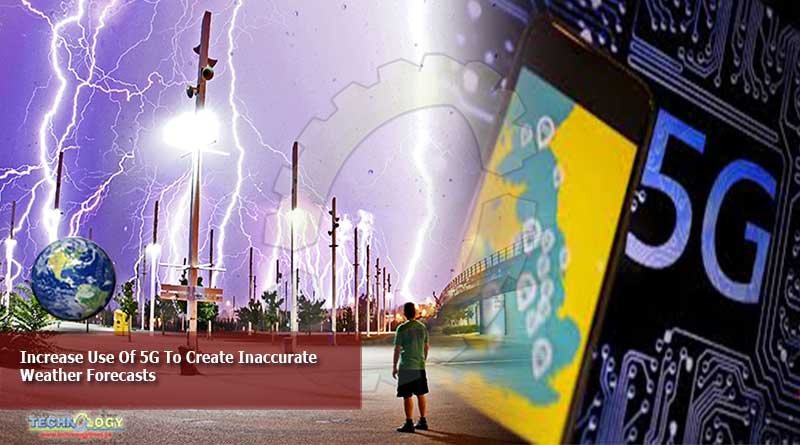A recent Rutgers study found that radiation “leakage” caused by the increased use of 5G wireless networks may lead to inaccurate weather forecasts.

A recent Rutgers study found that radiation “leakage” caused by the increased use of 5G wireless networks may lead to inaccurate weather forecasts.
This is the first quantitative study to tackle the issue, said Joseph Brodie, director of atmospheric research at the Rutgers Center for Ocean Observing Leadership.
“We thought (that) it is an important issue to address as the 5G era is coming and it’s important to understand how much impact it could have on the weather forecast,” he said.
The study, which was published to the 2020 Institute of Electrical and Electronics Engineers 5G World Forum, began at the beginning of the year and was led by electrical and computer engineering doctoral student Mohammad Yousefvand.
“It was motivated by the series of controversial and sensational articles on how 5G networks and systems could disrupt satellite measurements of the weather, and impact weather forecasts,” said senior author Narayan Mandayam, distinguished professor and chair of the Department of Electrical and Computer Engineering.
Warnings regarding these potential effects were issued by the National Oceanic and Atmospheric Administration, the National Aeronautics and Space Administration and the U.S. Navy Meteorologists, Mandayam said.
Brodie and co-author Roger Wang, a professor in the Department of Civil and Environmental Engineering, discussed the details of the study, which used modeling to assess the impact of 5G leakage on weather prediction using data from the 2008 Super Tuesday tornado outbreak.
“Based on our modeling, 5G leakage power of -15 to -20 decibel Watts affected the 12-hour forecast of precipitation (by up to 0.9 millimeters) during the tornado outbreak and temperatures near ground level (by up to 2.34 degrees Fahrenheit),” they said.
The magnitude of error in the forecast found by the study can be argued as insignificant or significant, depending on whether you represent the 5G or meteorological community, they said.
Michael Wu, co-author and professor in the Department of Electrical and Computer Engineering, explained radiation leakage and its potential to affect weather forecasts.
“Leakage is unintended radiation from a transmitter into an adjacent frequency band or channel,” Wu said.
In order to meet the demand for high data rate applications, 5G networks must use higher (mmWave) frequencies, he said. The mmWave bands in the 24.25-27.5 GHz range, called the n258 band, are used by 5G, and weather satellites use 23.8 GHz.
“Weather prediction models rely on passive satellite sensors/radiometers observations at the Advanced Microwave Sounding Unit (AMSU-A) sensors that operate at 23.8 GHz on weather satellites located at 700 km distance from earth’s surface,” Wu said.
This band frequency is ideal for measuring water vapor content, which is one of the inputs used in weather prediction algorithms, he said.
“The specific concern is that the signals from the n258 band will leak into the band used by weather sensors on satellites that measure the amount of water vapor in the atmosphere and therefore affect weather forecasting and predictions,” Wu said.
The reason that this concern is specific to 5G networks is that others, like 4G LTE and 3G, seek lower band frequencies, usually below six GHz, and therefore have little effect on weather prediction, he said.
“One of our takeaways is that if we want leakage to be at levels preferred by the 5G community, we need to work on more detailed models as well as antenna technology (directional modulation/filtennas), dynamic reallocation of spectrum resources and improved weather forecasting algorithms that can take into account the leakage from 5G networks,” the researchers said.
Originally published at the daily targum
